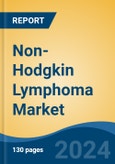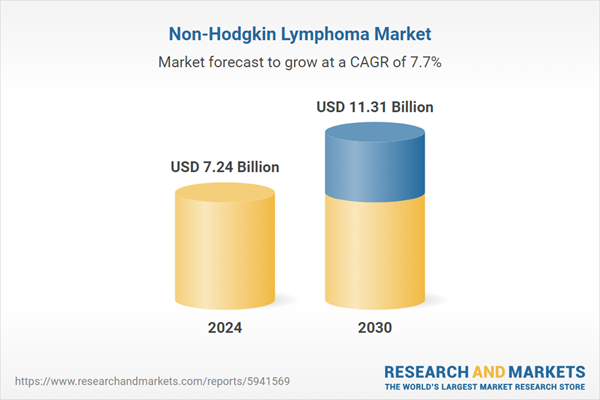T-cell Lymphoma is the fastest growing segment, North America is the largest market globally
Speak directly to the analyst to clarify any post sales queries you may have.
10% Free customizationThis report comes with 10% free customization, enabling you to add data that meets your specific business needs.
Key Market Drivers
The Global Non-Hodgkin Lymphoma market is significantly propelled by sustained advancements in targeted therapies and immunotherapies, which offer enhanced treatment efficacy and improved patient outcomes. The continuous development of novel agents specifically designed to target molecular pathways implicated in lymphoma pathogenesis has expanded therapeutic options, particularly for patients with relapsed or refractory disease. For instance, according to Genmab, on June 26, 2024, the FDA approved epcoritamab-bysp, known as EPKINLY®, for relapsed or refractory follicular lymphoma, representing the first and only T-cell engaging bispecific antibody administered subcutaneously for this indication. This progress not only provides new lifelines for patients but also fuels market expansion through the introduction of premium-priced, innovative treatments.Key Market Challenges
The substantial cost associated with novel therapeutics, particularly advanced biologics and CAR T-cell treatments, presents a significant impediment to the growth of the global Non-Hodgkin Lymphoma market. These high expenditures directly limit patient access to potentially life-saving interventions, especially in healthcare systems with constrained budgets or in regions lacking robust insurance frameworks.Key Market Trends
The non-Hodgkin lymphoma market is significantly influenced by the accelerating shift towards personalized medicine, primarily propelled by advanced genomic profiling. This trend emphasizes tailoring treatments based on an individual patient's unique genetic makeup, leading to more targeted and effective therapeutic interventions. For instance, the European Hematology Association's (EHA) guidelines for large B-cell lymphomas and peripheral T-cell lymphomas in 2025 highlight the increasing cruciality of molecular profiling for accurate diagnosis and subtype identification, which directly informs personalized treatment strategies. The expedited delivery of such critical diagnostic information is further advanced, as exemplified by the FDA approval of Thermo Fisher Scientific's Oncomine Dx Express Test in September 2025, designed for companion diagnostics and tumor profiling with results available in as little as 24 hours. This capability enables faster and more precise treatment decisions, enhancing patient outcomes and driving market expansion for advanced diagnostic solutions.Key Market Players Profiled:
- AbbVie Inc
- Bristol-Myers Squibb Company
- AstraZeneca plc
- Johnson & Johnson Services, Inc.
- Novartis AG
- Seagen, Inc (Pfizer Inc.)
- Bayer AG
- F. Hoffmann-La Roche Ltd
- Gilead Sciences Inc
- Merck & Co. Inc
Report Scope:
In this report, the Global Non-Hodgkin Lymphoma Market has been segmented into the following categories:By Disease Type:
- B-cell Lymphomas
- T-cell Lymphoma
By Drug Class:
- Monoclonal Antibodies
- Antibody-Drug Conjugates
- BTK/BCL-2 Kinase Inhibitors
- PI3 Kinase Inhibitors
- Others
By Route of Administration:
- Oral
- Parenteral
- Others
By Distribution Channel:
- Hospital Pharmacies
- Retail Pharmacies
- Others
By Region:
- North America
- Europe
- Asia Pacific
- South America
- Middle East & Africa
Competitive Landscape
Company Profiles: Detailed analysis of the major companies present in the Global Non-Hodgkin Lymphoma Market.Available Customizations:
With the given market data, the publisher offers customizations according to a company's specific needs. The following customization options are available for the report:- Detailed analysis and profiling of additional market players (up to five).
This product will be delivered within 1-3 business days.
Table of Contents
Companies Mentioned
- AbbVie Inc
- Bristol-Myers Squibb Company
- AstraZeneca plc
- Johnson & Johnson Services, Inc.
- Novartis AG
- Seagen, Inc (Pfizer Inc.)
- Bayer AG
- F. Hoffmann-La Roche Ltd
- Gilead Sciences Inc
- Merck & Co. Inc
Table Information
| Report Attribute | Details |
|---|---|
| No. of Pages | 187 |
| Published | November 2025 |
| Forecast Period | 2024 - 2030 |
| Estimated Market Value ( USD | $ 7.24 Billion |
| Forecasted Market Value ( USD | $ 11.31 Billion |
| Compound Annual Growth Rate | 7.7% |
| Regions Covered | Global |
| No. of Companies Mentioned | 10 |









